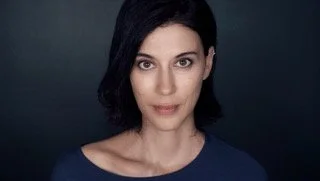Letter from the Guest Editor
The following was originally published in the Palestine in America Film Edition. Please support our work by ordering a print copy, downloading a digital edition or becoming a subscriber.
Dear readers,
I’m honored and excited to be presenting you with this edition of Palestine in America as the magazine delves into film for the first time. I am writing this in the midst of extreme personal distress, and I do not tell you this to garner sympathy but because it is of grave (great?) importance to this edition of Palestine in America. It is behind my thinking when it comes to film and, very basically, to cameras. You see, my mother was born in an area of Palestine named Masafer Yatta, in the village of Jinba. I can show you where. I can take you to the cave if you want. Is that enough to support what I’m telling you? Is that enough to prove that we’ve been there? Will a picture do?
After the Second Intifada, cameras became more accessible than ever–though they’d already failed us long before the ubiquitous mobile phone camera or a reliable data connection. You see, I grew up when Mohammed Al-Durra was killed in September 2000. My family and I had just returned to the United States from Palestine after a month, most of it spent in mourning of my cousin–a story for another time. Back to the cameras.
In 2009, our family won an appeal to be able to return to one of our villages in Masafer Yatta - Bir il-’Id. Six families moved back to the village, including my uncle and his family. Once there, they quickly returned to shepherding flocks just as their fathers and ancestors did, but just as soon as they arrived came increased threats against their lives from the area’s numerous settlements. By 2012, all of my uncle’s neighbors had left for fear of their lives. At this time, human rights organizations began to arm children on “front-line” communities with cameras to document settler and soldier abuses, but it wasn’t soon after that these children and their cameras would become a target of soldier ire and attack. This isn’t where the battle against the camera began, and it certainly wouldn’t end there.
In 2022, we watched in horror as beloved veteran journalist Shireen Abu Aqla was gunned down by the Zionist army in Jenin, and for months after we had to endure the same absurd tetris of denial that we experienced with young Mohammed Al-Durra. Countless other instances of horror against Palestinians have been caught on camera yet still denied as part of the State of Israel’s grotesque impunity.
I have grappled with my own disappointment in cameras–and I cannot lie, there is so much disappointment–but it was also coupled with a desire to reframe my usage of this tool for our own collective aspirations. So when I was asked by Palestine in America to write this letter, this was an opportunity to reconnect with those who have inspired or framed the way I think about images and their import. From Cherien Dabis, who taught us that the smallest story can be the site of the world’s biggest truths and pain, to our featured filmmaker Lexi Alexander who entered this world of film through the unfamiliar world of martial arts to now addressing topics she was told she should best avoid.
Through this edition, I have offered you readers a mere glimpse into the rich world that is Palestinian film–there are so many artists, producers, curators, editors, and more that I would love to share with you, but we only had so much space and time. That said, I am thrilled to be able to offer you a piece of my teachers and peer practitioners who are rebuilding the Palestinian image archive, as well as shepherding our films into the world. I am filled with hope because each of the artists that I’m sharing with you also have a deep investment in the next generation of Palestinian storytellers.I look forward to future Palestine in America film editions but most importantly, I look forward to liberation and a full, faithful repertoire of our stories told by us and about us.
Many thanks,
Ryah Aqel




